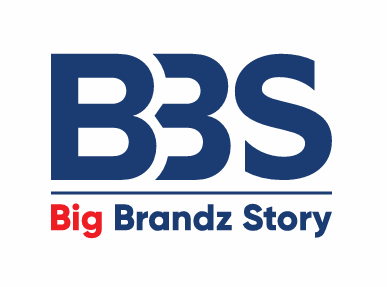When we talk about iconic brands, we’re not simply referring to companies with large market caps or global reach. We’re talking about Apple’s bitten fruit that feels like a badge of identity. The golden arches that instantly conjure memories of childhood Happy Meals. Or a Nike swoosh that somehow motivates us to move, dream, and believe. These brands don’t just exist in the marketplace—they live in our minds and embed themselves in our emotions.
So, what gives a brand this magnetic, lasting quality? The answer lies in a confluence of psychology, behavioral science, and design-thinking often orchestrated with extraordinary intention. In today’s saturated market, where consumers are bombarded with choices, it’s not just about better products. It’s about psychological resonance.
Let’s delve into the mental and emotional levers that transform brands from corporate names into cultural icons.
The Emotional Shortcuts: Why Our Brain Loves Familiarity
Human brains are designed for efficiency. Every time we make a decision—from choosing cereal to buying a car—we lean on mental shortcuts called heuristics. In branding, this manifests as familiarity bias. We naturally gravitate toward what we recognize. The more we see a brand, the safer it feels. But frequency alone doesn’t guarantee emotional connection.
Enter emotional branding. The most iconic brands don’t just show up often—they show up meaningfully. They tap into universal human desires: belonging (Coca-Cola), achievement (Nike), security (Volvo), or self-expression (Spotify). These associations become emotional touchpoints. Over time, we begin to trust and prefer the brands that make us feel understood.
Neuromarketing studies have confirmed this. When participants view a well-loved brand, the brain lights up in areas associated with identity and emotion—not logic or price assessment. This is why emotional resonance almost always trumps rational comparison.
The Power of Symbolism
Branding is a language of symbols, and the most memorable ones speak without saying a word. Think of Chanel’s interlocking Cs, Tesla’s futuristic “T,” or the understated elegance of the Apple logo. Each represents more than a company they’re symbols of status, rebellion, elegance, or innovation.
From a psychological standpoint, symbols are cognitive anchors. They compress complex ideas and feelings into simple visuals. This symbolic shorthand becomes embedded in memory, activating not just recognition but also storytelling within the consumer’s mind.
Moreover, iconic logos evolve with culture. Apple’s transformation from rainbow-colored to minimalist monochrome wasn’t just an aesthetic choice—it was a nod to shifting consumer sensibilities. Modernity, clarity, focus. In this sense, iconic brands don’t just follow culture; they anticipate and co-create it.
Nostalgia: The Hidden Lever of Long-Term Loyalty
Another powerful tool in the psychology of branding is nostalgia. The warm glow of remembering a product or experience from childhood can be a brand’s most underestimated asset. Behavioral economists note that nostalgia reduces price sensitivity, increases trust, and enhances emotional engagement.
Why do brands like LEGO, Nintendo, or Polaroid endure through generations? Because they’ve made peace with time. They honor their roots while still staying relevant. LEGO, for instance, reimagines its classic bricks through pop-culture collaborations, hitting both children and the inner child of adults.
Even tech brands use nostalgia. Microsoft’s revival of “Clippy” or Apple’s subtle callbacks to earlier iMac designs tap into a kind of emotional déjà vu. They remind consumers of when they first encountered the brand—usually a formative experience that cements long-term loyalty.
Archetypes and Brand Identity
Carl Jung, the famed psychoanalyst, proposed that humans connect with archetypes—timeless, universal characters that appear in myths, stories, and dreams. Modern brand strategists have taken this insight and run with it.
Nike is the Hero driven, relentless, empowering. Disney is the Magician—transforming the ordinary into wonder. Harley-Davidson? The Outlaw, breaking rules and riding free.
When a brand embodies an archetype, it becomes psychologically consistent. Consumers begin to know the brand’s personality, predict its behavior, and develop trust. Archetypes are more than marketing toolsthey’re psychological frameworks that create coherence across product, message, and experience.
Identity and the Mirror Effect
The most powerful brands don’t just sell products—they reflect who we are, or who we aspire to be. This is the mirror effect. Brands like Supreme, Tesla, or Glossier succeed not just because of quality or scarcity, but because owning them signals something about the self.
Brand loyalty, then, is often identity loyalty.
This becomes especially critical for younger consumers who use brand affiliation as a form of self-expression. What shoes you wear, which phone you use, what streaming service you subscribe to—each is a puzzle piece in the larger collage of identity. Smart brands recognize this and build narratives that make the customer the hero of the story.
In fact, research shows that consumers are more likely to advocate for a brand when it aligns with their values, beliefs, or lifestyle. Patagonia’s environmental ethos, for example, makes buyers feel like participants in a larger cause—not just consumers of jackets.
Designing for the Subconscious
While much of branding focuses on messaging and aesthetics, truly iconic brands design for the subconscious mind. This includes subtle factors like color psychology (blue for trust, red for energy), auditory cues (the Intel chime, the Netflix tudum), and even tactile experiences (the unboxing of an iPhone).
All of these elements bypass rational thought and lodge themselves directly in memory. Over time, they create a kind of sensory branding footprint. Starbucks doesn’t just sell coffee—it offers a consistent atmosphere of smell, sound, and spatial design that primes the brain for comfort and familiarity.
These subconscious design choices become signature experiences. They’re often invisible until you remove them—and then, suddenly, the brand feels “off.” That’s the hallmark of deep-rooted, multisensory branding.
Evolving Without Losing the Core
Perhaps the greatest psychological feat a brand can achieve is evolution without dissonance. Brands must grow with their audience, adapting to new technology, values, and competitors. But too much change, and the brand loses its core. Too little, and it becomes irrelevant.
Apple is a case study in this balance. Over decades, it has moved from desktop computing to mobile devices to wearables and now AI—but it has never strayed from its archetype: the Creator, the Innovator. Its design language, tone, and purpose have remained remarkably consistent.
That consistency is what gives consumers psychological safety. It says: “You can change, but we’ll grow with you.”
The Final Takeaway: Brands Are Feelings
Strip away the business plans, marketing funnels, and ad campaigns, and what you’re left with is this truth: brands are feelings. They’re the emotions we associate with a product, the story we tell ourselves when we buy it, the identity we adopt when we use it.
To become iconic, a brand must move beyond function and even beyond aesthetics. It must tap into meaning—personal, cultural, and psychological.
Because in a world of infinite choice, it’s not just the best product that wins. It’s the one that feels like it was made just for you.










